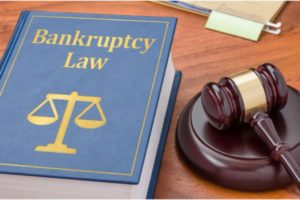In certain situations, a person considering bankruptcy may “prefer” a creditor prior to filing a bankruptcy case. This is usually in the form of payment to the creditor for an outstanding debt. These preferential payments to creditors, or “preferences,” under the definition found in § 547 of the Bankruptcy Code (Title 11), may complicate a bankruptcy case. Typically, the involvement of experienced bankruptcy counsel is necessary in bankruptcy cases involving preferences.
547 of the Bankruptcy Code defines a preference as
- Payment on an antecedent or previously incurred debt in contrast to a current debt;
- made while the debtor was insolvent;
- to a non-insider creditor, within 90 days of the filing of the bankruptcy;
- that allows the creditor to receive more on its claim than it would have, had the payment not been made and the claim paid through the bankruptcy proceeding.
To summarize § 547: A preference is a payment within 90 days of filing bankruptcy for a previously incurred debt to a creditor who is not defined as an insider, that allows the creditor to receive more than it would have from the bankruptcy case.
Bankruptcy trustees may recover payments to creditors that meet the § 547 definition of a “preference.”
Examples of preferences are:
- payment to a friend for a personal loan;
- payment to a financial institution for an unsecured loan.
It is the payment’s proximity in time to the filing of the bankruptcy case that converts a simple payment on a loan to a preference.
While there is a 90-day rule or window of time that applies to non-insider creditors, this window is extended to one year for “insiders” – family members or parties associated with the debtor through a corporate entity like a corporation or limited liability company (LLC).
Bankruptcy law does not presume that a debtor is insolvent regarding insider payments. Individuals contemplating bankruptcy must remain aware for an entire year of the possibility that a debt payment to an insider may be considered a preference. Again, the involvement of experienced bankruptcy counsel may be necessary to avoid making preferential payments in this circumstance.
It is important to note and remember that payments to a secured creditor are not preferences because the creditor did not receive more than it would have in the future bankruptcy case, where the creditor would receive the value of the collateral securing the claim. Defenses to preferences in tomorrow’s blog.
Talk to the Morrison Law Group about your Chapter 7 or Chapter 13 bankruptcy options. Call 801.456.9933 today to schedule a FREE consultation. We are Utah’s only statewide bankruptcy law firm and have locations in Ogden, Logan, Sandy, and St. George to serve the residents of the counties of Weber, Cache, Salt Lake, Utah, Morgan, Davis, Washington, and surrounding areas.



